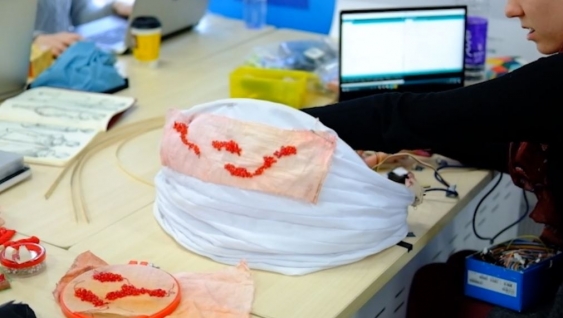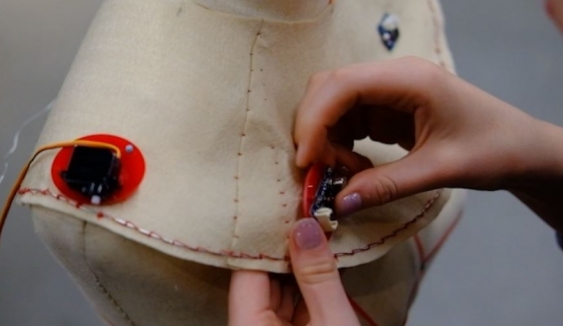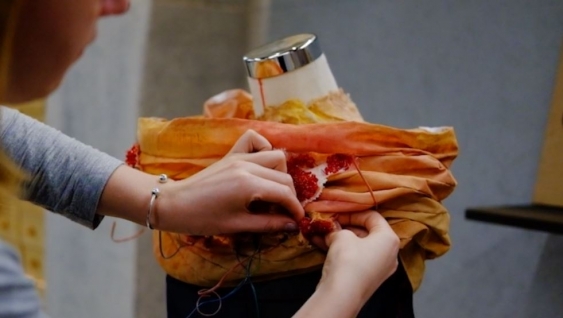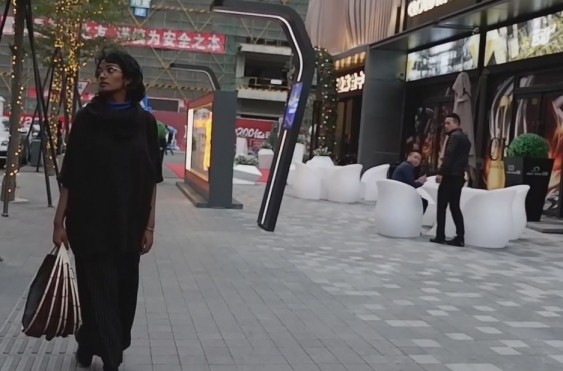Futuristic fashion: UNSW students design the new wave of wearables
A team of UNSW students visited Beijing, Hong Kong and Shenzhen to design a range of wearable technology prototypes in collaboration with Chinese students and manufacturers.
A team of UNSW students visited Beijing, Hong Kong and Shenzhen to design a range of wearable technology prototypes in collaboration with Chinese students and manufacturers.

With the market for smartwatches, fitness trackers and smart clothes predicted to double in the next five years, a team of UNSW students has travelled to China to design futuristic prototypes for the next generation of wearable tech.
The 24 students from Art & Design, Engineering and Medicine collaborated with university students and manufacturers in Beijing, Hong Kong and Shenzhen to produce wearable technology prototypes including a meditation hood and an anti-smog scarf.
“We need to design technical wearables to help adapt to the constant changes to our environment,” said Dr Patricia Flanagan, UNSW Art & Design lecturer and program coordinator. “The Chinese wearable technology market is growing so quickly that the students had greater access to electronics and tech manufacturers. Many of the pieces designed were speculative, designed to generate conversation.”
The Haptic Interface program, which ran in December, involved students working directly with manufacturers such as start-up Chinese company Seeed Technology and Shenzhen's X Factory, giving the artists and designers easy access to supply chains, tools and materials such as hardware, 3D printing, transformers and electronics.
UNSW Bachelor of Design student Deanna Wawn developed an anti-smog scarf that aims to draw attention to China’s ongoing air pollution crisis.

Development of the prototype anti-smog scarf. Photo: Supplied
“We wanted to make a product that was confrontational and showed where wearable technology is headed if countries such as China don’t do more to tackle pollution and strengthen environmental laws,” said Wawn, who developed the prototype with a group of students from UNSW and Hong Kong Polytechnic University.
The scarf has air pollution sensors that vibrate when levels get too high and servomotors that automatically signal the mask to lift over the wearer’s face.

Vibration LEDs on anti-smog scarf that register air pollution levels. Photo: Supplied

Prototype for the anti-smog scarf. Photo: Supplied
Third-year design student Monisha Chippada developed an anti-stress meditation hood that has a camera inside to block out out logos and other outside stimulation.
“Cacoon is a mediation pod that allows us to reclaim public spaces that are oversaturated with advertising and logos. It's designed to be portable and discreet in order to create a space of reclusiveness in busy environments.

A meditation hood designed to block out busy environments. Photo: Supplied
UNSW students studying textile design, computer science, intermedia design, product design, jewellery, bioengineering and medicine took part in the month-long program.

The meditation hood is designed to be portable. Photo: Supplied
“Designing in China meant the students had a platform for broader debate around wearable technology, our future selves and human interactions in this future landscape,” said Flanagan.
“The projects challenged students to work across disciplines and cultures and envision wearables could eventually look like."
The project will run for three years and is funded by the New Colombo Mobility Program. The prototypes will be shown at the Sydney Design Festival in March.